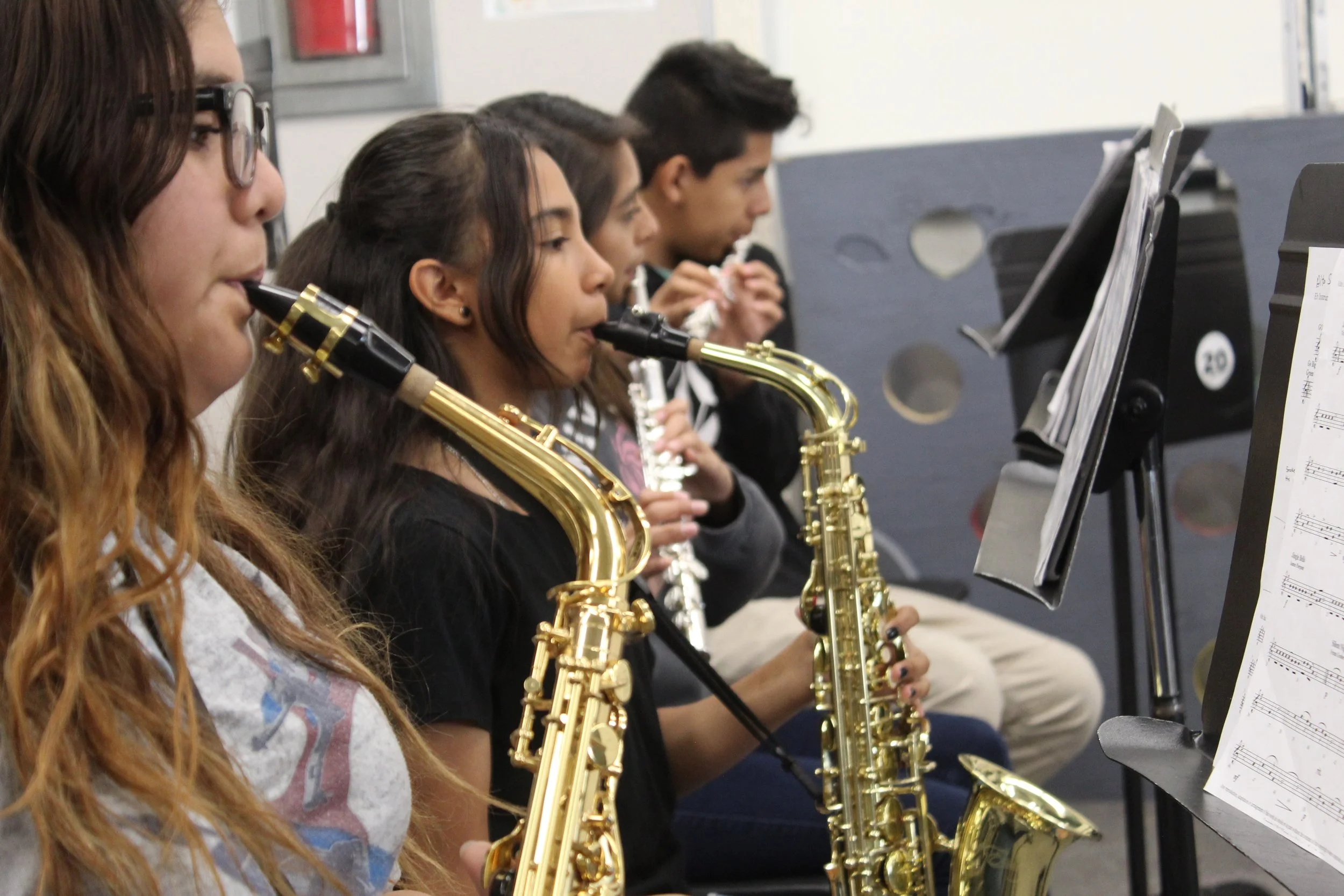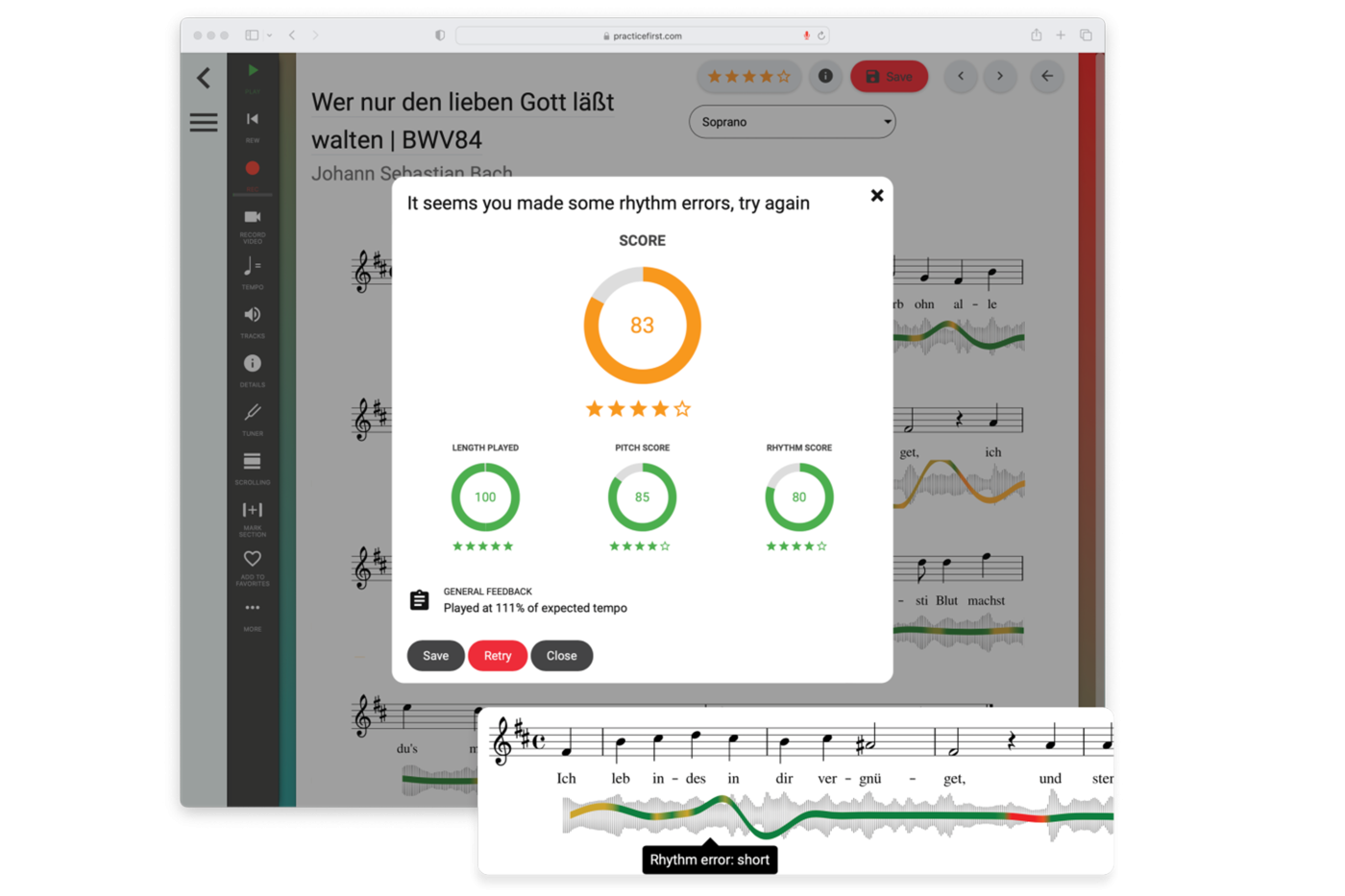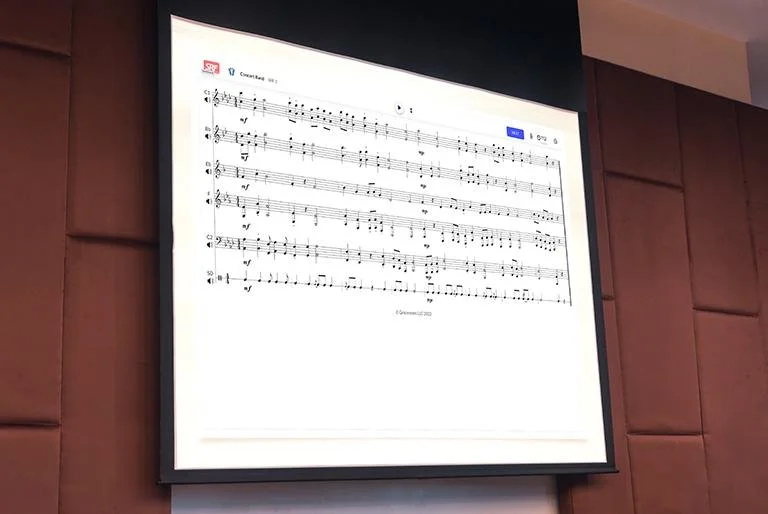Does Technology Belong in a Performance Ensemble Classroom?
Few questions spark more spirited conversation among music educators than this one: Does technology really belong in a performance ensemble? Whenever I am presenting a session or workshop to performance ensemble directors, I often relate my own experience teaching at the middle school level for nearly 15 years. I recount the fact that not once did I ever pull out technology during a band rehearsal, and while I stopped teaching nearly 20 years ago and technology was very different then, the reason for not using it was because I had so little rehearsal time with my students - and every minute was precious. Back then, there were no smartphones, no Chromebooks, no online software at all. I never dreamed that my students could do things outside of my classroom other than responding to written prompts on a primitive discussion board that our school district utilized. If I was still teaching today, my answer would likely be very different but I would still approach the question in a similar way: how can technology help me do my job more effectively? How can I engage my students outside of the classroom? How can technology make more time for me to focus on what I really want to do in the classroom - make music?
Whether you’re directing a concert band, a string orchestra, a mixed choir, or any type of performance ensemble, you’ve probably wrestled with the same questions. Some music educators embrace technology as indispensable tools that expand access, enhance practice, and personalize feedback. Others see them as potential distractions that pull students away from the essence of ensemble music-making — listening, blending, and creating something ephemeral together. This conversation is hardly new. Every generation of music teachers has had to decide how to balance tradition with innovation. The first time a metronome entered a rehearsal, someone probably complained that it would “ruin musicianship.” The first time a band director used an app like Tonal Energy, a veteran likely muttered that students would forget how to listen. Technology, in one form or another, has always found its way into our classrooms. The real question isn’t whether it belongs — it’s how and when we use it.
When used thoughtfully, technology doesn’t diminish student musicianship at all. It deepens it. It provides opportunities for students to practice, reflect, and grow when they’re not in front of us. The key is remembering that technology works best as a teaching assistant rather than as a stand-in for the director. Consider the daily challenge of running an ensemble rehearsal. You might have over one hundred students in your band, sixty in your choir, or seventy in your orchestra, all with varying levels of experience and ability. You have one rehearsal per day (if you’re lucky) to unify them into a single musical ensemble. In that short period of time, it’s nearly impossible to offer every student personalized feedback. Yet, outside of rehearsal, tools like PracticeFirst, Sight Reading Factory, and the MusicFirst Classroom make that kind of individualized instruction not only possible but practical. That was exactly what I wanted to do when I designed our platform 12 years ago.
Imagine your choir sopranos practicing their parts on PracticeFirst the night before rehearsal, getting instant feedback on pitch and rhythm accuracy. Picture your violas using Sight Reading Factory to strengthen their sight-reading fluency. Visualize your trumpet section recording their practice sessions and uploading them to the MusicFirst Classroom, where you can listen, comment, and guide them — all before you’ve even picked up the baton the next morning. When those students walk into rehearsal, they’re not just playing or singing notes; they’ve already refined the technical aspects. You can now focus on phrasing, blend, expression, and nuance. Technology doesn’t steal rehearsal time — it creates it.
One of the most exciting byproducts of digital learning is how it encourages reflection. Our students today are constantly recording, editing, and sharing their experiences online. Harnessing that instinct within the ensemble context transforms it from social activity into musical development. When students record their own performances, whether individually or in small groups, they begin to hear themselves differently. A violinist who listens back to a difficult passage realizes that her tone is brighter when she adjusts her bow pressure. A tenor in choir notices that he goes sharp on sustained notes when he doesn’t support his breath. A percussionist learns to line up perfectly with a click track after analyzing a PracticeFirst submission. These are moments of genuine self-discovery — the kind we can’t always facilitate in real time during rehearsal. Over a semester, or even the total time they spend in your ensemble over multiple school years, these recordings can be compiled into a digital portfolio that shows measurable progress. Students not only see where they started and where they are now, but they also begin to internalize the process of goal-setting, practicing, and improving. For directors, this provides a window into each student’s journey — a chance to celebrate growth rather than just assess proficiency.
Technology has also broadened who can participate in performance ensembles. Not every student learns or performs in the same way, and not every student comes from a background with equal access to private instruction or musical resources. For some, digital notation tools like Flat for Education open up entirely new avenues for expression. A choir student who struggles to read notation can enter their melody and instantly hear it played back, connecting sound to symbol in a tangible way. A percussionist with limited mobility can perform using a MIDI controller or digital pad. A student who doesn’t speak English fluently can receive translated instructions, visual rubrics, and audio examples that help them grasp musical concepts faster. In this way, technology doesn’t replace musicianship — it democratizes it. It allows us to build ensembles that are more inclusive, more equitable, and more reflective of the diverse ways students experience music.
Of course, there are reasons why many ensemble directors remain cautious. The most obvious one is sacred to us all: rehearsal time is precious. Every minute spent troubleshooting devices or explaining login instructions feels like time stolen from the communal act of making music. Rehearsal is where ensemble members learn to breathe together, to listen across the group, to react to subtle shifts in tempo and color. These are deeply human skills, honed only through interaction and presence. When screens or headphones dominate that space, something essential is lost. The choir’s magic lies in the shared resonance of voices in a single acoustic space. The orchestra’s power emerges from the physical act of bowing and breathing as one. The band’s unity is felt through the synchronization of countless individual attacks forming one collective sound. None of this can be replicated or improved by a screen.
That’s why I believe very strongly that technology’s proper place is outside rehearsal time. It should prepare students for the human work of music-making, not interrupt it. Of course there are moments, particularly during a warm-up routine, where it makes perfect sense. Projecting a sight reading activity on a whiteboard and having the ensemble play it is a perfect example. Playing a metronome or drone pitch over an audio system is also a good example of this. But the moment you pick up the baton to start working on a piece of repertoire, the devices should disappear, and the attention should shift fully to the sound in the room. The goal isn’t to build tech-savvy musicians — it’s to build musicians who can use technology to support artistry, not replace it.
One way to look at technology integration in a performance ensemble classroom is to think of it as your assistant director. The assistant’s job is not to steal focus but to support the vision, to anticipate needs, and to make the ensemble stronger. That’s exactly how we should think about digital tools. Before rehearsal, technology can act as a personal coach for every student. They can practice independently with guided feedback, record their work, and come to class ready to contribute. During rehearsal, technology takes a back seat, allowing human interaction to take center stage. After rehearsal, it re-emerges as a platform for reflection and reinforcement — a way to extend learning beyond the classroom walls. In this model, technology becomes an invisible partner in the educational process. It helps us reclaim what has always mattered most: time to make music together.
The difference between effective and ineffective tech integration lies entirely in the intent. We’ve all seen tools implemented just for the sake of novelty, with little thought to how they actually serve learning. But when directors adopt technology in service of clear musical goals, the results can be transformative. Use software to address the specific parts of your program that you’d like to improve. They can all provide a high quality user experience with the repetition and variety students need without taking up precious rehearsal time. And in my opinion, none of the tools available from MusicFirst can replace the artistry, empathy, or leadership of the teacher. They simply free us to do more of what we do best — inspire, interpret, and connect.
So, does technology belong in the performance ensemble classroom? I believe it does — but only when we remember its proper role. Our mission as ensemble directors hasn’t changed. We still gather students in rooms filled with instruments and voices, teaching them how to listen, respond, and create something beautiful together. Technology can’t replace that. What it can do is enhance it, giving students the tools to grow independently so that our precious rehearsal time can focus on artistry rather than mechanics. Used wisely, technology allows us to extend our teaching beyond the podium. It lets students practice with purpose, reflect with honesty, and return to rehearsal ready to make meaningful music.
In the end, technology isn’t the enemy of tradition. It’s the bridge between the way we’ve always taught and the way our students now learn. When it serves the music — not the other way around — it becomes exactly what we need it to be: a force for good.
If you would like to try all of the tools that MusicFirst offers performance ensemble directors, sign up for a FREE 30-day trial and starting using it with your students today.


